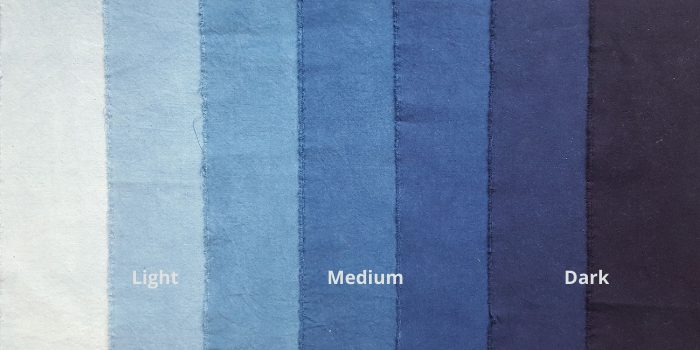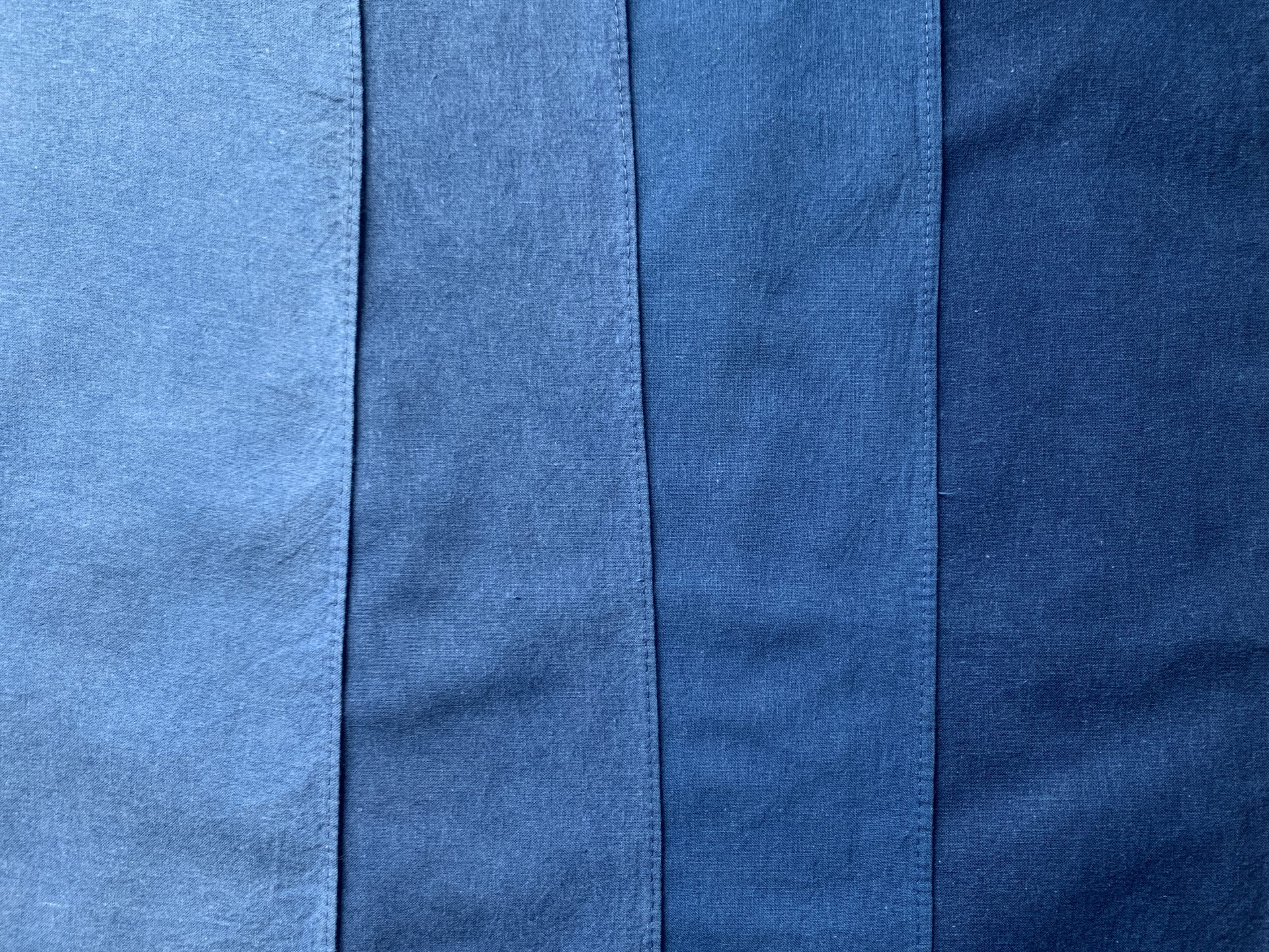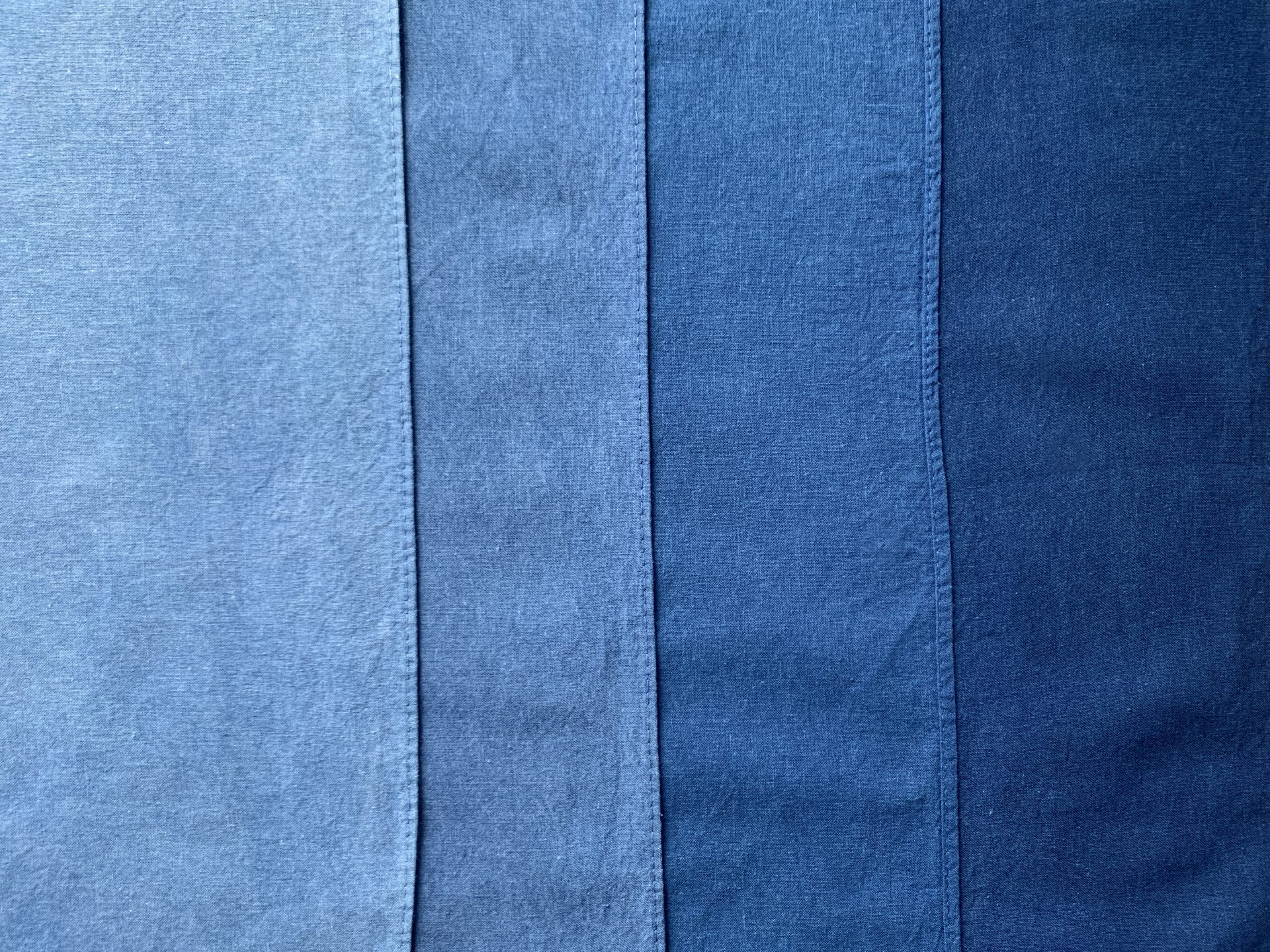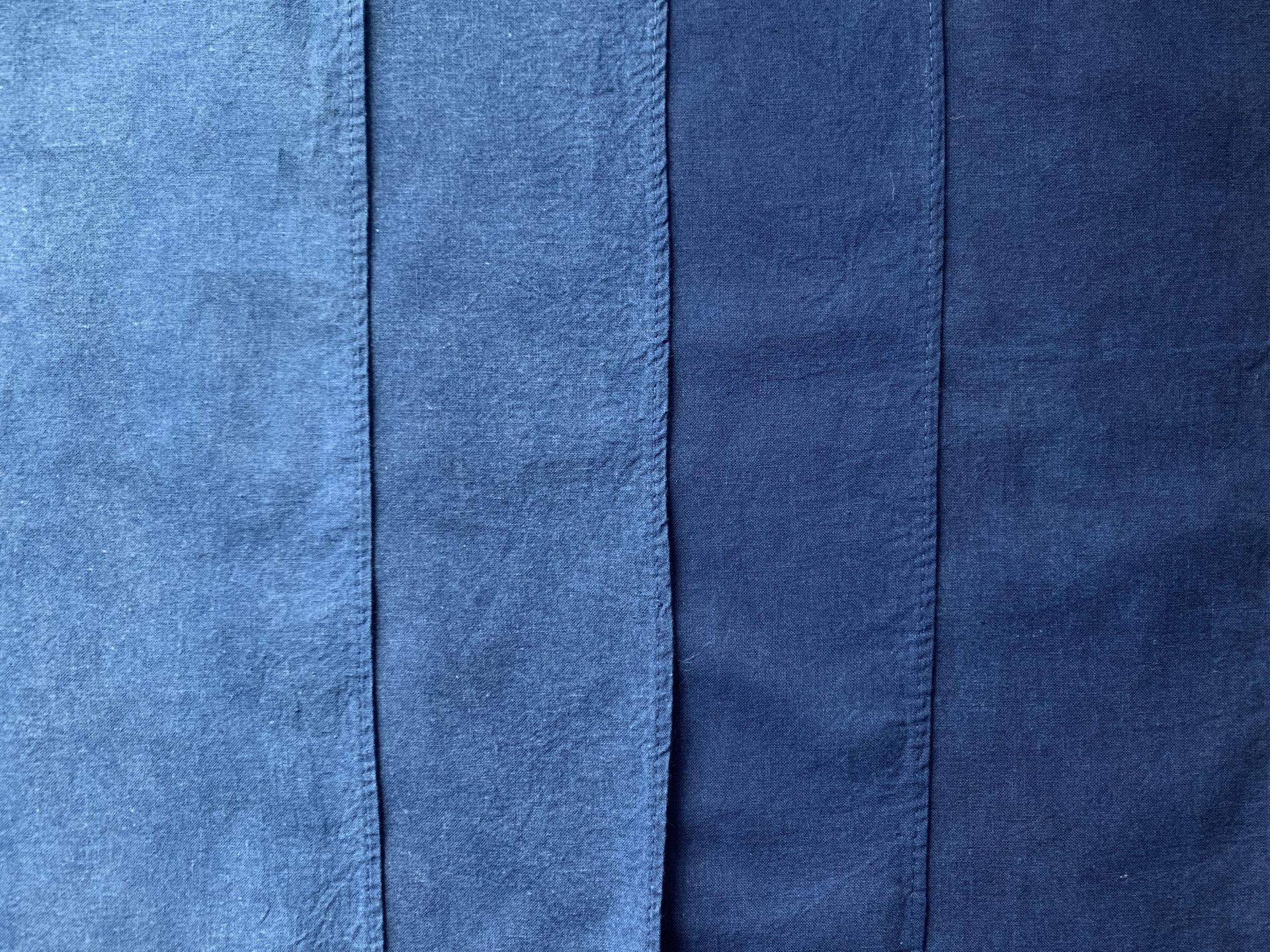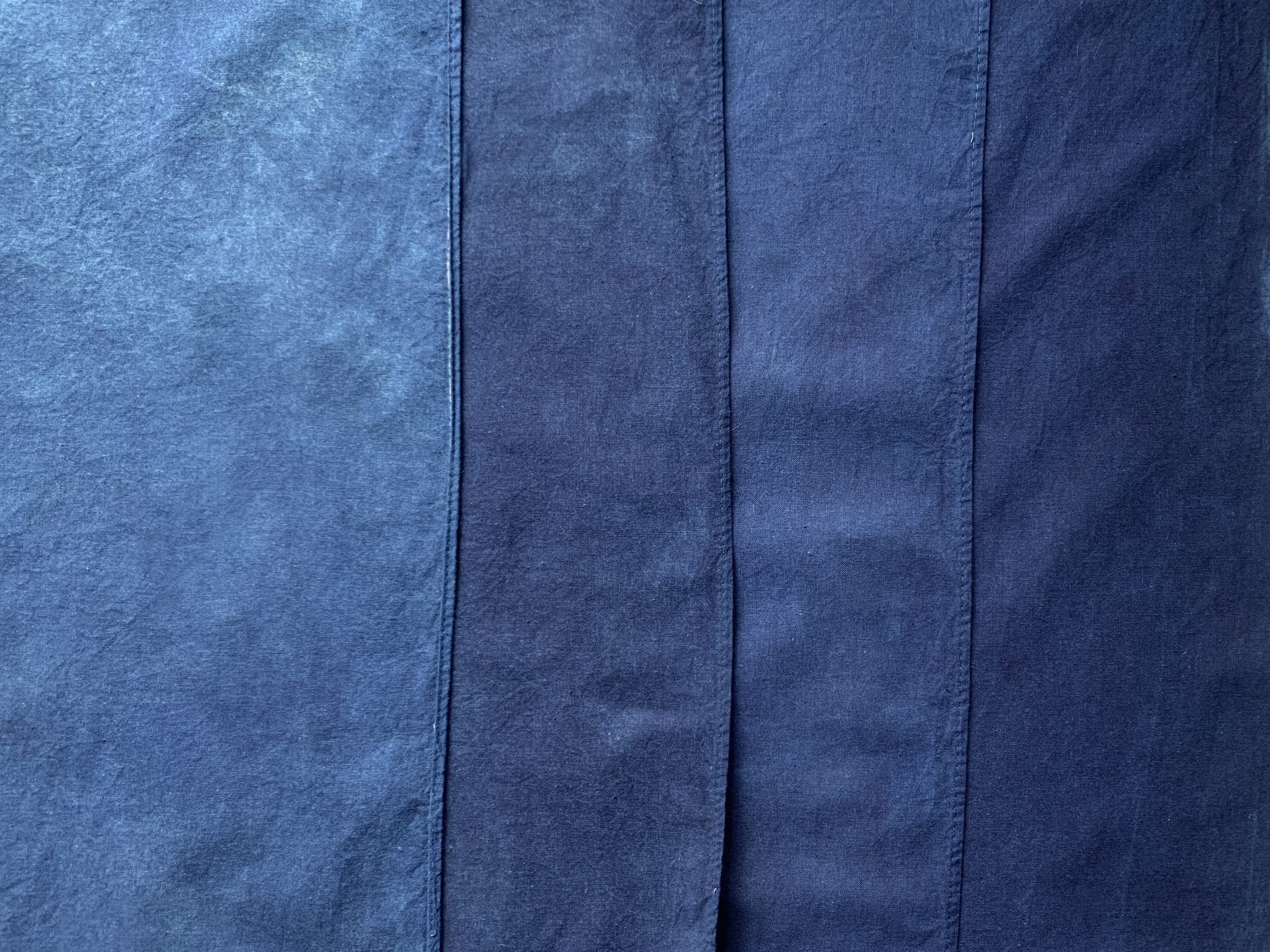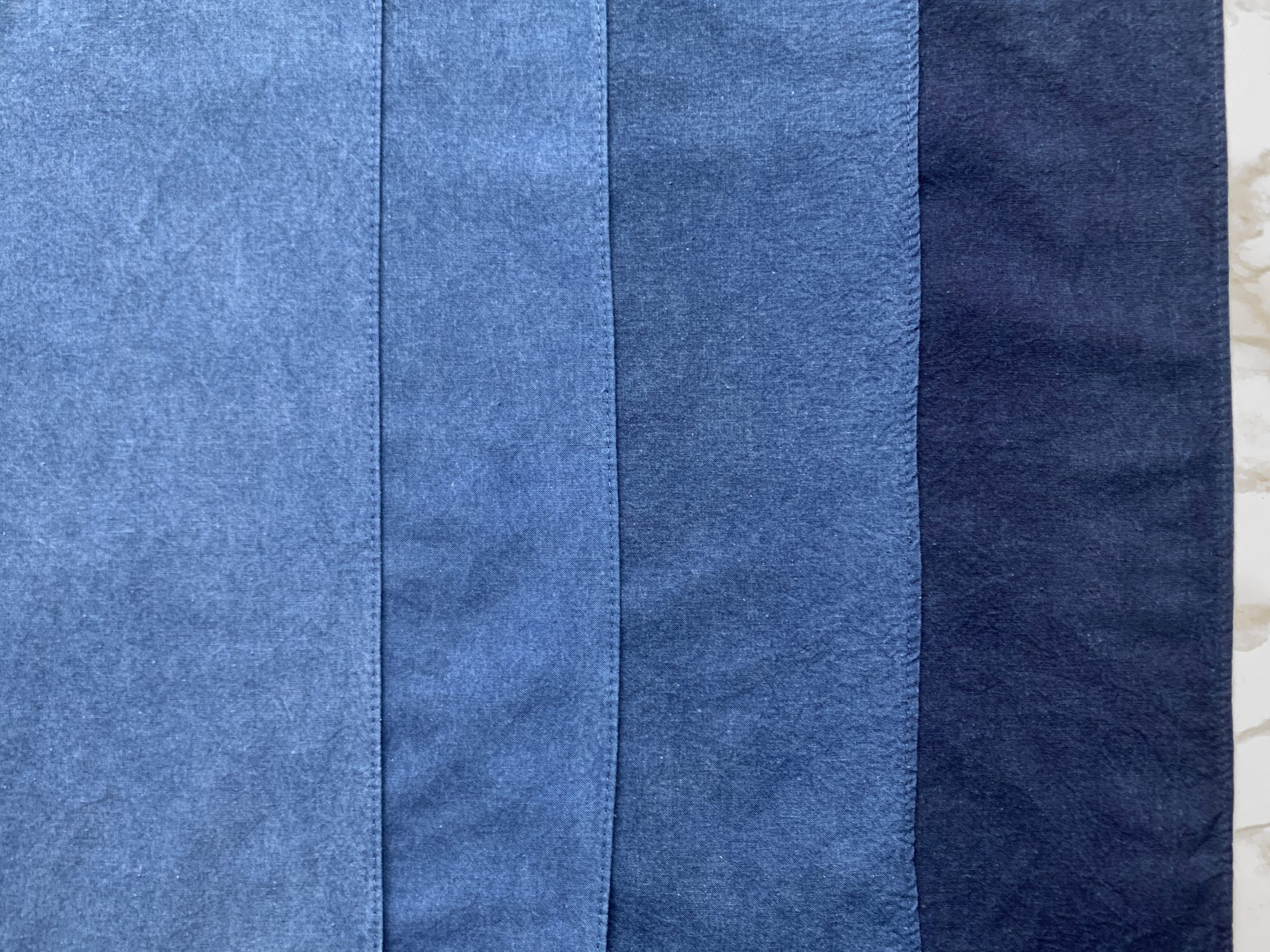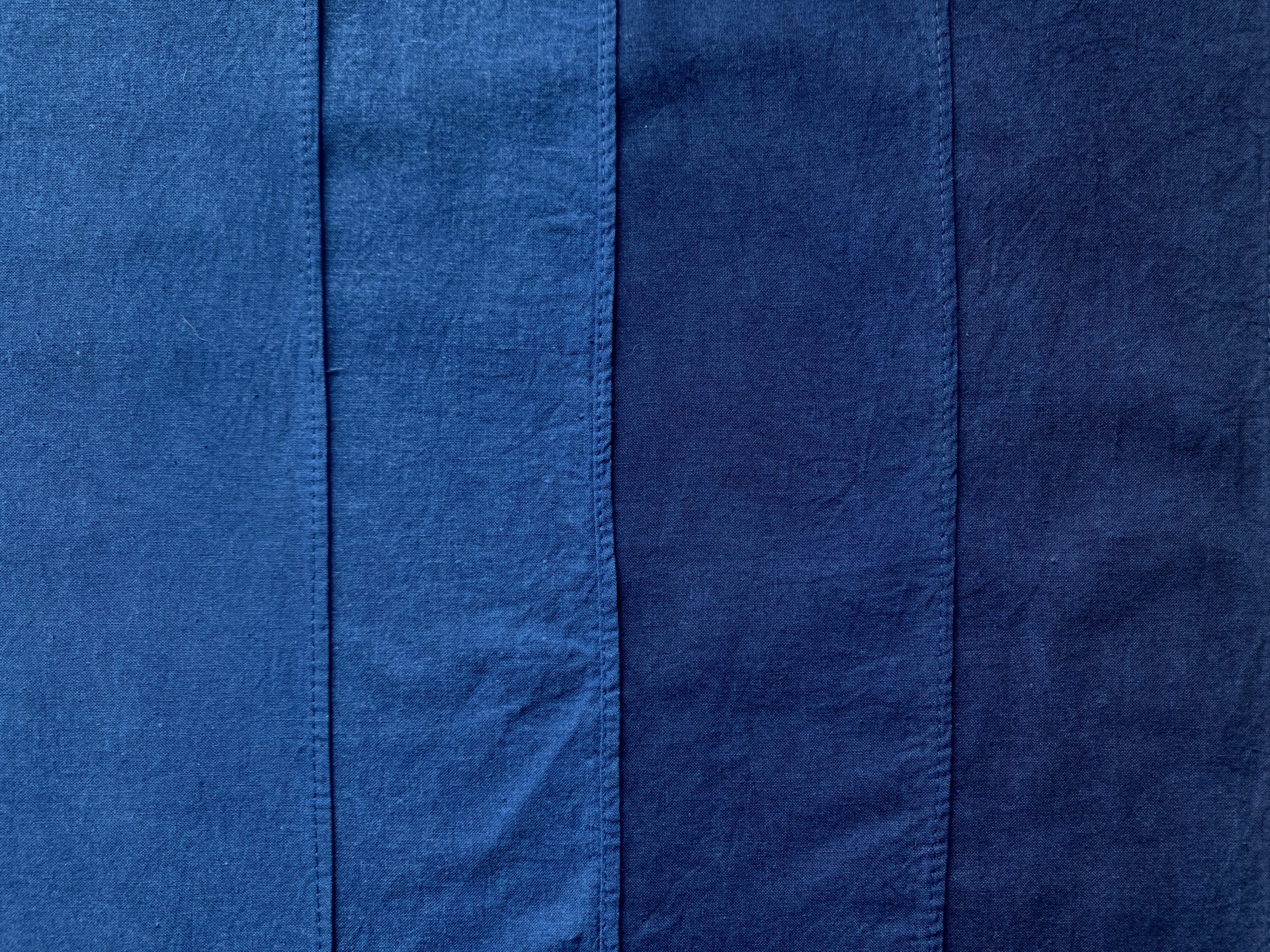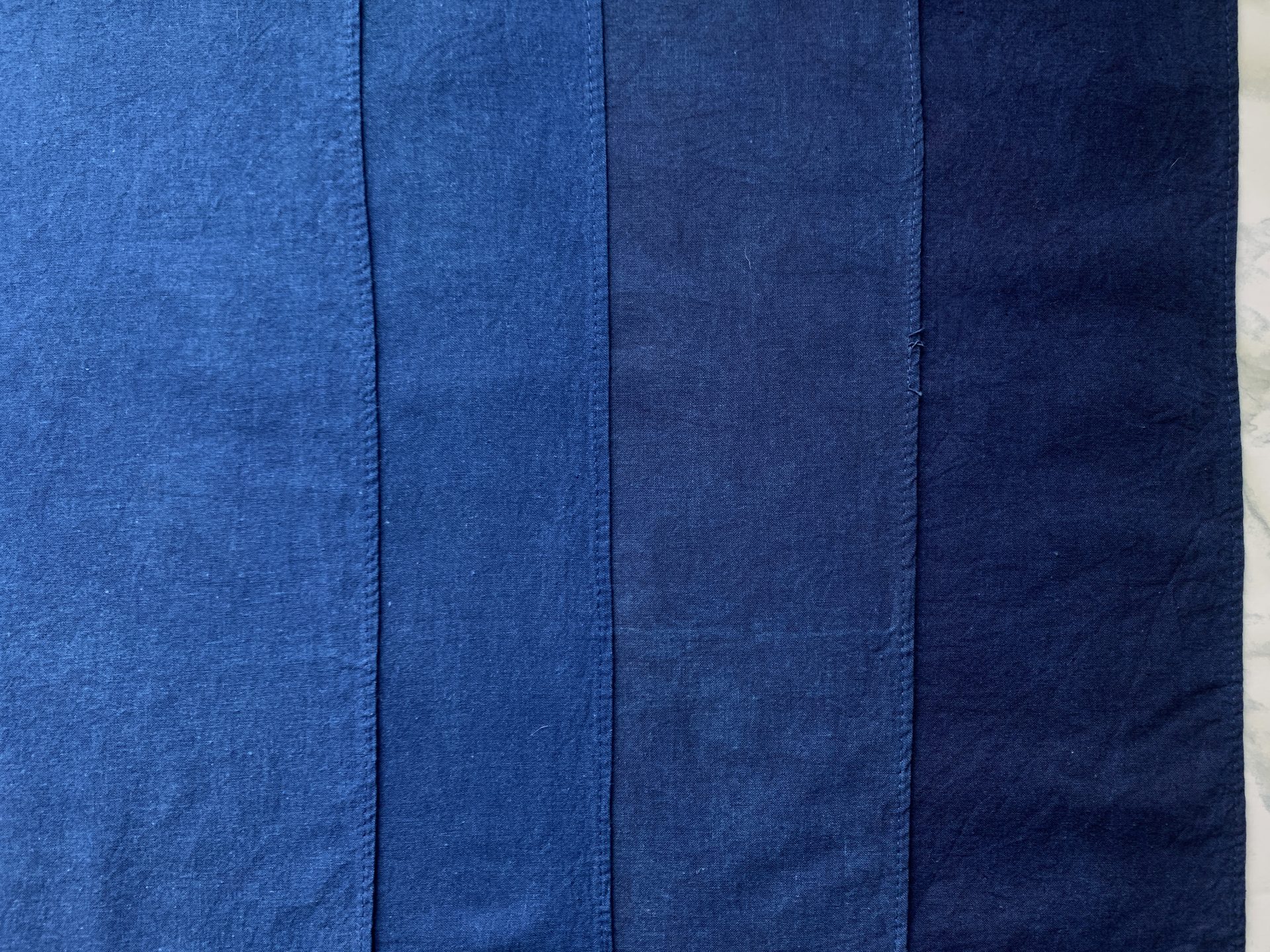Indigo gradation from Aboubakar Fofana’s workshop on indigo. The vat is a 7gpl fructose vat.
Diving into indigo blue
We have been working with the 1-2-3 indigo vat for nearly 10 years and over time made some adjustments to the original recipe from Michel Garcia. Here we share a recent experiment where we set up 4 different types of 1-2-3 vats and present the results. New instructions are linked below for each vat type with hints for a successful indigo vat! You can also search our blog posts for information on indigo vats and answers to your many questions.
Our experiment
There are many versions of the 1-2-3 vat, which is a simple way to create an indigo vat using either fructose, iron or henna as one of the ingredients in place of harsh chemicals.
Our variations include
- 1-2-3 Fructose vat using 1 part indigo, 2 parts calcium hydroxide and 3 parts fructose
- 1-2-3 Shakealotta vat using 1 part indigo, 2 parts calcium hydroxide and 3 parts fructose, but mixing the powders together before adding them to the vat.
- 1-2-3 Henna vat using henna instead of fructose
- 1-2-3 Iron vat using iron instead of fructose, AND using different ratios of the ingredients.
Safety
The ingredients for a 1-2-3 fructose and henna vat are not toxic, but we are working with fine powders and a dust mask is highly recommended. Calcium hydroxide is basic and may be irritating. Gloves and eye protection are also useful to protect eyes and skin. The temperature of the vat water is very hot – nearly 180F or 90C so use pot holders when heating water for the vat and watch for spills and steam. If using indigo around children, adult supervision is highly recommended as the vat liquid is alkaline and may be drying or irritating.
Important safety note: Iron (ferrous sulfate) in high doses is unsafe for babies, small children and pets. If you are contemplating using an iron vat, it is not known if iron residue remains on the fabric and in the vat in amounts that could be of concern. Out of an abundance of caution, we recommend using the iron vat for adults only. Store iron and your vat in a secure location and away from children and pets.
Types of vats
There are four different vats that you can build. Use the information below to decide which one is best for you.
| VAT TYPE | ABOUT | ADVANTAGES | DISADVANTAGES |
|---|---|---|---|
| Fructose vat | Clearest blue | Dyes lighter than henna or iron | Seems to perform best when aged for 2-3 days, and when warmed before use. |
| Fructose Shakealotta vat | Clearest blue | Dyes lighter than henna or iron Fastest vat to set up |
Seems to perform best when aged for 2-3 days, and when warmed before use. |
| Henna vat | Warmest blue/yellow cast | Dyes darker colors in fewer dips | Requires extra step to set up as the henna should be dissolved and strained separately. Benefits from a 3 day aging. |
| Iron vat | Coolest blue/gray cast | Dyes darker colors in fewer dips Can be used at room temperature without reheating |
Recommended for adults only as iron is unsafe for babies, children and pets. Should not be used with silk or wool as it can damage the fibers |
Our experiments consisted of building vats using identical amounts of indigo, twice the indigo amount of calcium hydroxide and three times the indigo amount of fructose or henna, which is the classic 1-2-3 recipe. The exception is the iron vat, which uses 1 part indigo, 2 parts iron and three parts calcium hydroxide. We made one 5 gallon bucket (16 liter) sized vat using the 4 different methods, then dipped white cotton bandanas in each vat for the same number of dips and the same amount of time. Once each bandana was oxidized, labeled and washed, we compared the results among the different vats. The results were surprising and here’s what we learned.
- All the vats benefited from a 3-day curing or resting process, and dyed more evenly and to a deeper shade, even with the same number of dips. Fresh vats yielded lighter and more uneven shades. If a particular vat was uneven while fresh, it seemed to even out after a 3 day curing period.
- Iron and Henna as reducing agents created the darkest shades with fewer dips. Each has its drawbacks but both are good choices for dark indigo fans.
- Fructose and Shakealotta produce very similar results after their 3 day curing process. Shakealotta dyed the lightest with a fresh vat.
The following are comparisons of each of the vats after a fresh dip (once the vat had cooled and the indigo solution was clear) and a vat that sat for 3 days and then was heated, stirred and allowed to clear.
Comparing Fresh and Aged Fructose Vat Shades
From left to right: 3 dips, fresh vat, 5 dips fresh vat; 3 dips aged vat, 5 dips aged vat
Note: 3 dips means that we dipped the sample for 1 minute, oxidized, and then repeated for a total of 3 dips and oxidations.
5 dips means that we dipped the sample for 1 minute, oxidized and then repeated for a total of 5 dips and oxidations
Comparing Fresh and Aged Shakealotta Fructose Vat Shades
From left to right: 3 dips, fresh vat, 5 dips fresh vat; 3 dips aged vat, 5 dips aged vat
Note: The fresh 3 dip shade was the lightest of all the vats, but once the vat aged, it was nearly identical to the Fructose 1-2-3 vat.
Comparing Fresh and Aged Henna Vat Shades
From left to right: 3 dips, fresh vat, 5 dips fresh vat; 3 dips aged vat, 5 dips aged vat
Henna takes a bit of time to make as the henna powder tends to get lumpy and it is rather thick (think okra goo). We like to strain it to remove the lumps before adding it in. It does make a beautiful vat with a warm undertone from the henna.
Comparing Fresh and Aged Iron Vat Shades
From left to right: 3 dips, fresh vat, 5 dips fresh vat; 3 dips aged vat, 5 dips aged vat
The iron vat was the most uneven as a fresh vat but became very dark and even after 3 days aging.
Comparing all vats – 3 x 1 minute dips in a fresh vat
From left to right: Fructose, Shakealotta, Henna and Iron. All fresh vats, all 3 dips.
Comparing all vats – 5 x 1 minute dips in a fresh vat
From left to right: Fructose, Shakealotta, Henna and Iron. All fresh vats, 5 dips. You can really see where the iron really starts to show how dark it is going to be.
Comparing all vats – 3 x 1 minute dips in an aged vat
From left to right: Fructose, Shakealotta, Henna and Iron. All Aged vats, 3 dips
Notice how Fructose and Shakelotta are nearly identical in an aged vat. Henna and Iron are darker but Iron is the darkest of these samples.
Comparing all vats – 5 x 1 minute dips in an aged vat
From left to right: Fructose, Shakealotta, Henna and Iron. All Aged vats, 5 dips
In this set of samples, Iron pulls away as the darkest shade. Henna starts to reveal its brown-orange undertones, warming up the dark indigo shade, and Fructose and Shakalotta are a reliable, medium dark blue.
You have a lot of flexibility in creating the vat of the concentration and size that you need for your indigo practice. Now that you see the results you can get, enjoy your indigo adventures!

